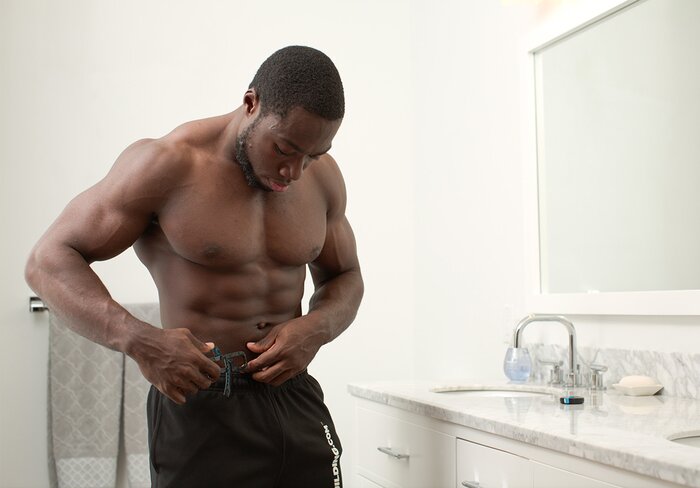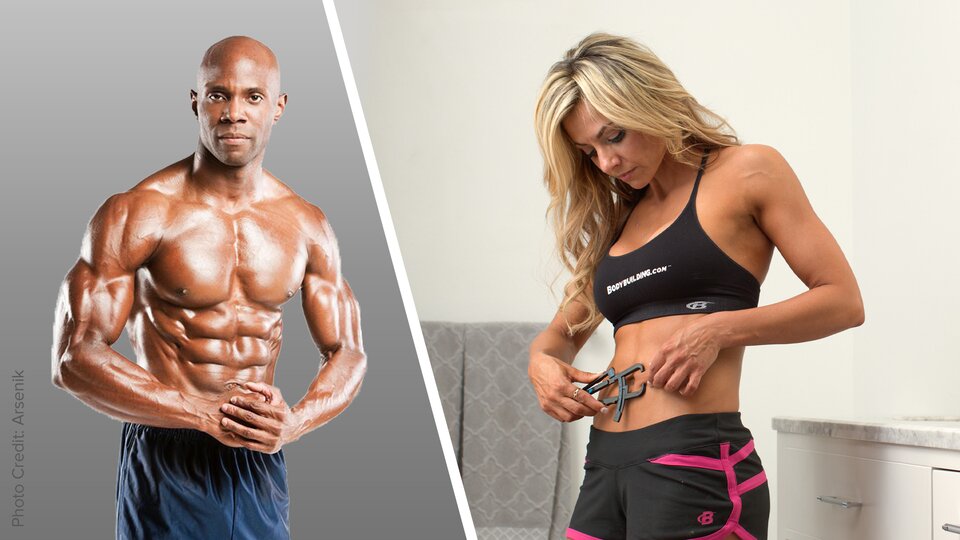What is a good “lean, but healthy and sustainable” body-fat percentage to aim for and live at most of the time?
Plenty of lifters and athletes want to get ripped and shredded—and maybe even stay that way year-round. It’s tempting—especially if you’ve looked at countless photos of ripped people, or had a time in your life when you were able to attain that look for a show or shoot and have the photos to prove it.
But the reality is not everybody can—or should—get to that shredded level and stay there. Frankly, it is not sustainable at all! If you’re going to do it, it’s going to have to be something that you design your whole life around. As I explained in my article, “How Do I Go from Lean to Ripped?” you’ve got to have a pretty unique idea of “fun” for that to be fun. And having an exceptionally low body-fat percentage can have negative health effects for your fertility, your immune system, and even your heart health.
Let’s say you’re not up for that challenge. That’s fine! There’s a range of healthy and sustainable body-fat levels between ripped and unhealthily overweight.
And before you pick a number, let’s be clear that there are many different factors that play into what constitutes a healthy body-fat percentage for you. A few include your gender, physical activity, body type, genetics and natural tendencies, and age. To cite the most obvious example, women have a much wider range for what is considered a healthy body-fat level because they require more body fat than men to support their respective reproductive functions.
What’s my ideal body fat?
To find what’s best for most people, let’s start by taking a look at one of the most popular body-fat scales, from the American Council of Exercise (ACE):
Women
- Essential Fat: 10-13%
- Athletes: 14-20%
- Fitness: 21-24%
- Acceptable: 25-31%
- Obesity: More than 31%
Men
- Essential Fat: 2-5%
- Athletes: 6-13%
- Fitness: 14-17%
- Acceptable: 18-24%
- Obesity: More than 25%
You can argue over the categories and their boundaries, but this is a “good enough” scale for the vast majority of people.

Essential Fat
If you’re looking for a “never go lower than this percentage unless your life depends on it,” the essential fat category is your line. Essential fat is integral for a healthy body to live and function. We’re not talking love handles here; this is the type of fat that plays a major role in temperature regulation, vitamin absorption, hormone regulation, and just holding your body together.
Where is essential fat found? It is found in the brain, bone marrow, nerves and membranes that protect your organs.
So, when someone says, “My body fat was 2 percent on a bodybuilding stage,” (Trust me, keep listening to fitness conversations for long enough and you’ll hear something close.), you can tell them laughingly that is not possible. You’d be dead.
Athlete
If you’re wise enough not to want to dig into essential fats, “athlete” is tempting, right? But athlete is pretty close to that “unsustainably shredded” standard I talked about earlier. There’s a good reason it’s called athlete: You have to be working your butt off, in the gym or on the field, to hang out at a body fat like that. It can be healthy for a period of time—say, during the competitive season—but let’s just say there are off seasons for a good reason.
Fitness
Now we’re talking. For a man with average genetics and a healthy lifestyle, 14-20 percent is a great, sustainable body fat. It’s lean enough to show some decent muscle definition, but high enough that you can build strength and muscle and enjoy your life.
For a woman, a similar range would be around 21-28 percent. That is healthy and realistic if you are exercising consistently and eating pretty well. And you can stay in that range without having to make dramatic dietary restrictions, doing extreme exercise routines, or risking doing harm to your hormones or reproductive health.

Acceptable/Obesity
So… what if you’re over those “fitness” lines? Does that make you unfit, unhealthy, or somehow less of a person? Absolutely not.
You can be squarely in “acceptable” and be healthy and active. Even if you’re in the “obesity” class, that in and of itself doesn’t make you unhealthy. It’s just one health measurement of many. But if you’re there and you don’t want to be, or you’re looking to set a transformational fitness goal, don’t feel like “athlete,” aka “ripped,” is the promised land.
In the End, Health Matters Most
It can be easy to forget, but you can be unhealthy at any body-fat level. That’s why I like to think this way: The goal should always be, “How can I be healthy while maintaining a reasonable body fat that supports my fitness goals.”
Don’t forget that word, “reasonable.” Eat well, exercise consistently, fill your life with activity, and you can find your level—and stay there.
